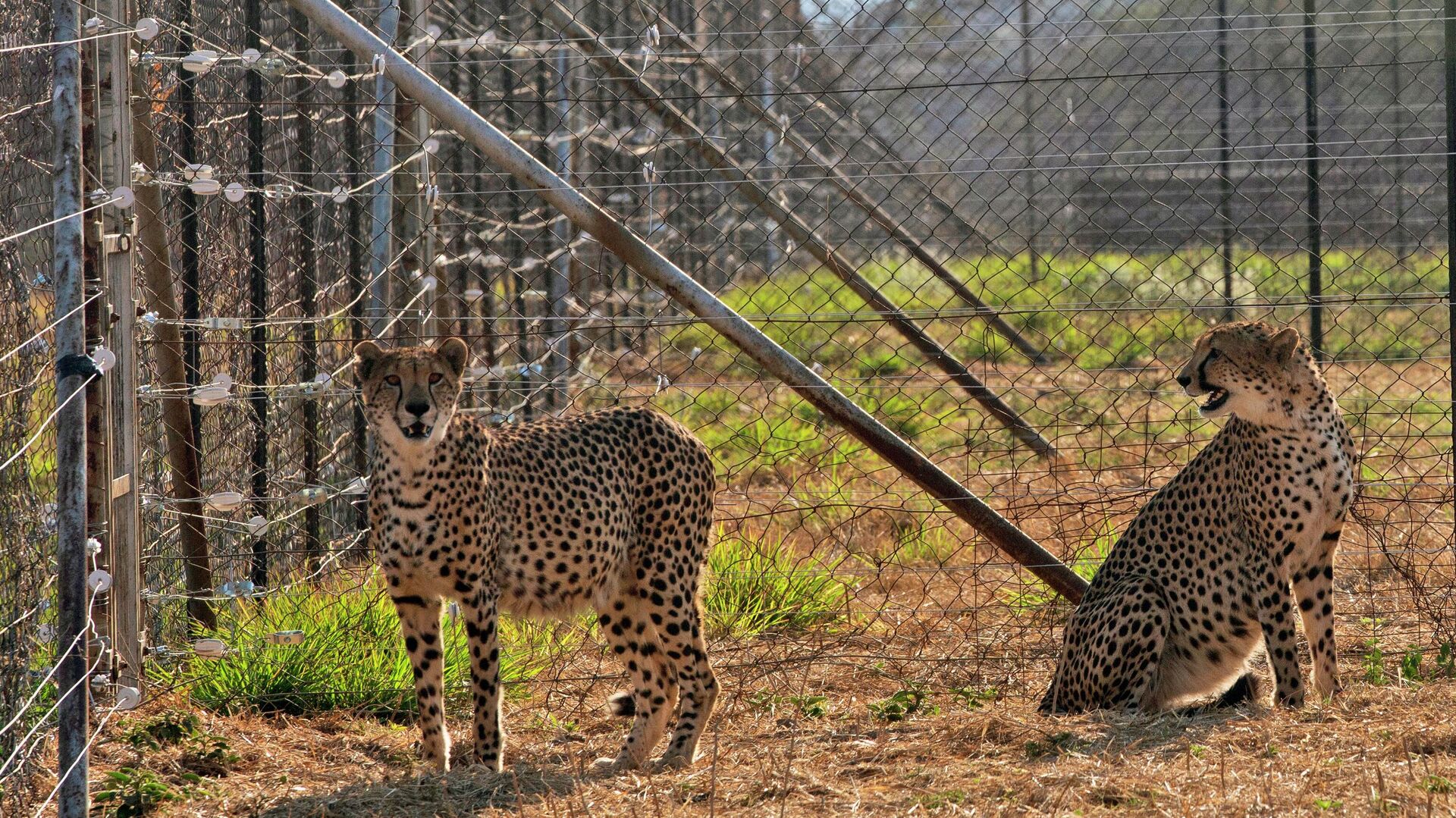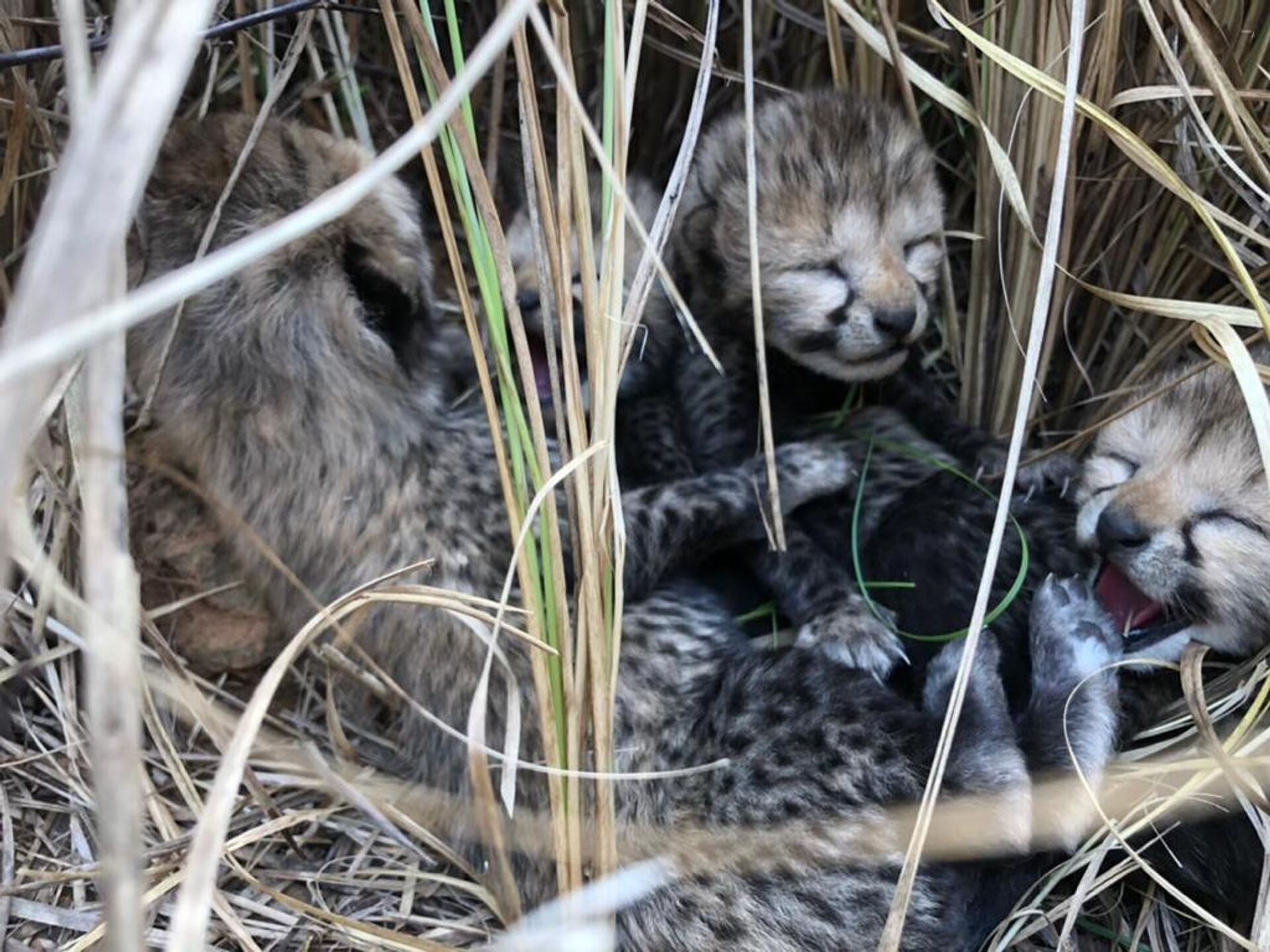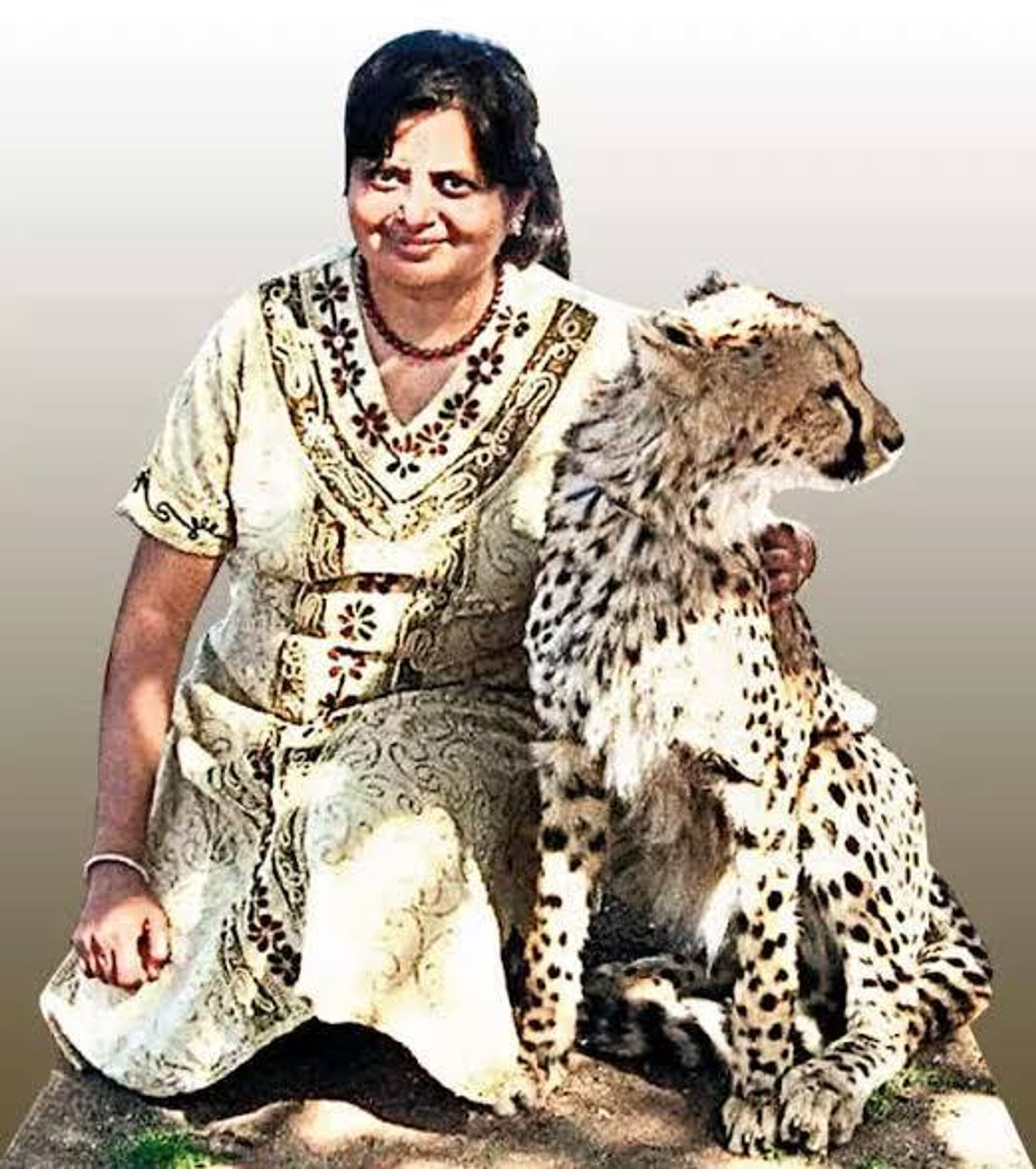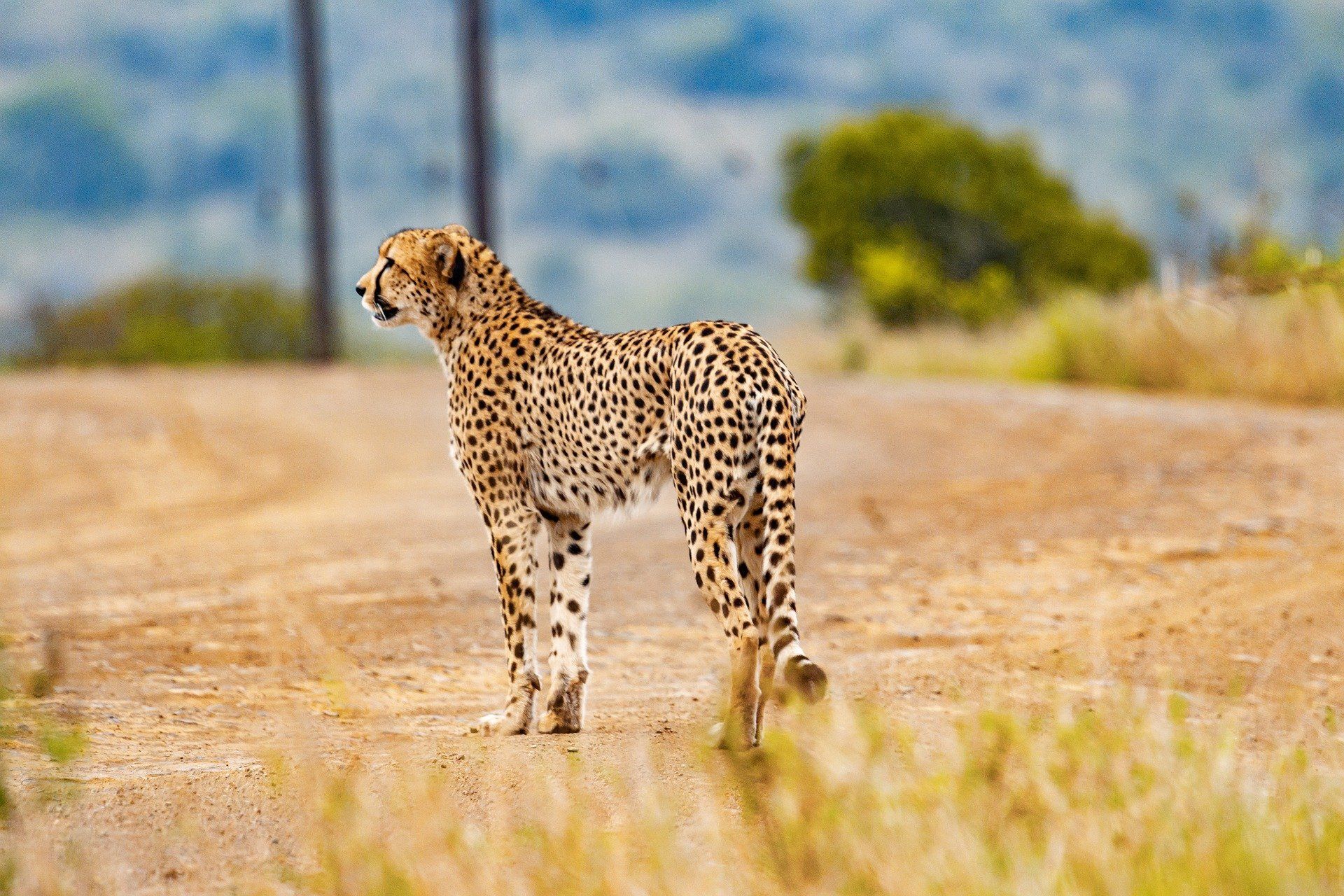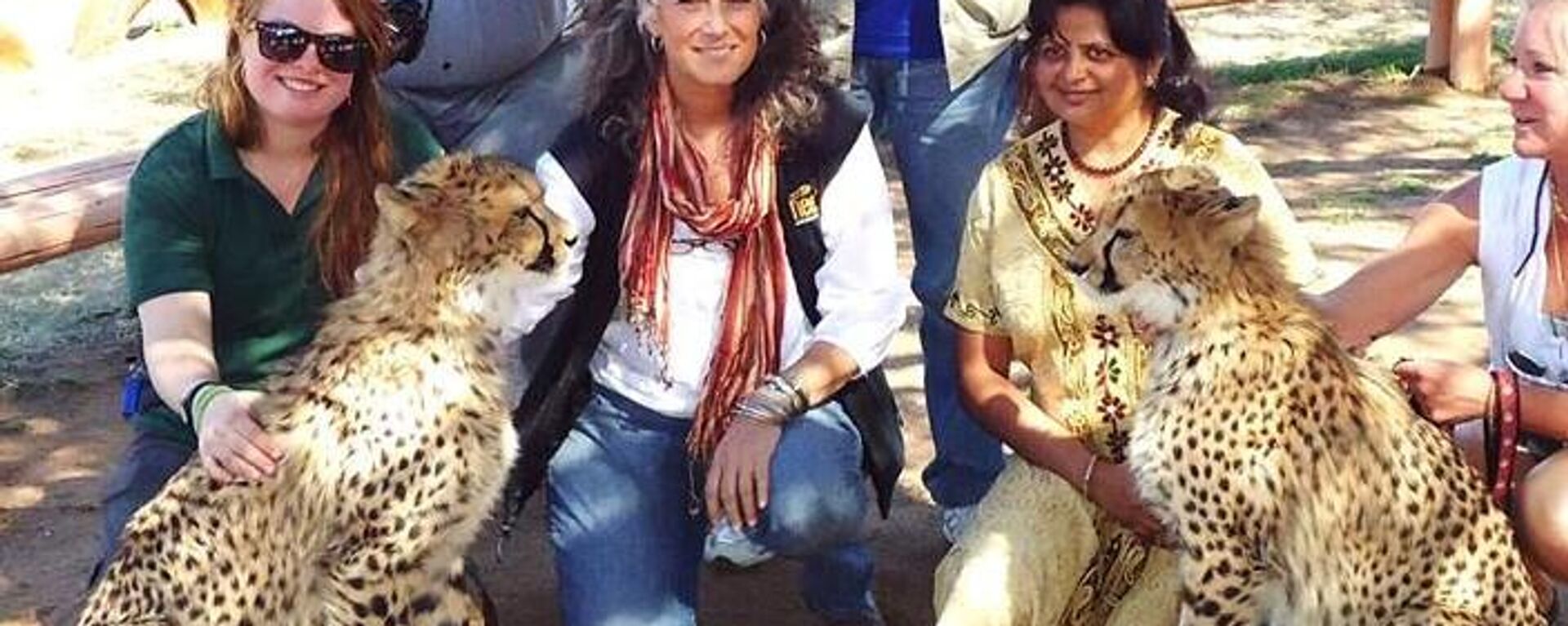https://sputniknews.in/20230805/why-are-kunos-cheetahs-dying-3365344.html
Why Are Kuno's Cheetahs Dying?
Why Are Kuno's Cheetahs Dying?
Sputnik India
On Wednesday, another Cheetah, who was translocated from South Africa under the Cheetah Revival Project, was found dead at Madhya Pradesh state's Kuno National Park. The death toll has now reached nine.
2023-08-05T08:00+0530
2023-08-05T08:00+0530
2023-08-05T08:00+0530
india
wildlife
african cheetah
nature conservation
narendra modi
environment
climate change
british raj
population decline
world population
https://cdn1.img.sputniknews.in/img/07e7/08/04/3405987_0:207:3072:1934_1920x0_80_0_0_074d47aff00c271950fb63ae9440501a.jpg
The Asiatic cheetah, popularly known as the hunting leopard, thrived in India during the Neolithic age or the New Stone Age (10,000 BC-2200 BC).According to experts, the word 'cheetah' is derived from the Sanskrit word ‘chitraka’ which means ‘the spotted one’.The presence of cheetahs in the Neolithic age is evident in several cave paintings of that era situated across India’s Madhya Pradesh and Gujarat states.Unlike leopards, cheetahs, the world's fastest animals, were not a threat to humans. Known for their sharp hunting skills, cheetahs were tamed and trained by several Kings and nobles to hunt down gazelle and blackbucks.According to the reports, Mughal emperor Akbar, who ruled India from 1556 to 1605, had around 1,000 Cheetahs for hunting animals. His son, Jahangir, is said to have caught more than 400 antelopes with the use of trained cheetahs.How Did Asiatic Cheetahs Go Extinct in India?The fall in India's cheetah population started in the early 20th century, during the British Raj (British rule).It was such a problem that the Indian princes had to import 200 African cheetahs for assisting in royal hunts between 1918 and 1945.According to experts, the rapid decrease in the cheetah population in India can largely be attributed to the difficulties encountered in breeding these majestic felines in captivity.Other reasons cited are the loss of their habitat and poaching by the British for their unique spotted coats.In 1947, the year when India gained independence from the British, an Indian prince named Maharaja Ramanuj Pratap Singh Deo, who belonged to the royal family of Koriya from Chhattisgarh state, hunted down India's last three cheetahs.In 1952, the Indian government officially declared cheetahs extinct from India and called for measures and proposals to reintroduce the animal in the country. What is the Current Population of Cheetahs in the World?Before the Cheetah went extinct in India, the wild cat was commonly sighted across the Middle East, Central Asia, and India. However, now, it is only found across Iran and Africa.According to the International Union for the Conservation of Nature (IUCN) Red List of Threatened Species, cheetahs have been categorized as "vulnerable", and are critically endangered in North Africa and Asia.A World Wildlife Fund report revealed that there are estimated to be around 7,000 cheetahs left in the wild.As of 2015, the maximum number of cheetahs live in Namibia, which has a population of more than 3,500.What Efforts has India Made to Reintroduce Cheetah in India?For decades, the Indian government has been making proposals for the reintroduction of cheetahs in the country.In 1970, the government initiated talks with Iran to translocate their Asiatic cheetah. However, due to lack of population of the wild cat, the project fell through.The Indian government subsequently reached out to Africa for the translocation of the African cheetahs, as recommended by experts. Why Was Kuno National Park in Madhya Pradesh State Chosen for the Cheetahs’ Relocation?After surveying several National Park and wildlife sanctuaries in India, the experts zeroed in on Kuno National Park (KNP) in Madhya Pradesh.Cheetahs feed on chinkara, chital, nilgai, sambar and wild pig which were in good numbers at KNP.From climate conditions and natural cheetah habitat to minimal human-wildlife conflict, the KNP was considered a good site for the translocation of cheetahs.What is India’s Project Cheetah All About?After 70 years, cheetahs were reintroduced on Indian soil through ‘Project Cheetah’, launched by the Indian government last year. It was touted to be the world’s first inter-continental large wild carnivore translocation project.In 2022, India struck a deal with Namibia for the reintroduction of eight African cheetahs in India.In September last year, Prime Minister Narendra Modi released eight Namibian cheetahs - five females and three males - into a small quarantined enclosure at KNP before setting them free into the wild.India signed another deal with South Africa and relocated the first batch of 12 cheetahs in February 2023. The agreement also included the relocation of 12 cheetahs every year from South Africa to India for the next eight to 10 years.A total of 20 radio-collared cheetahs were relocated to India’s KNP from Namibia and South Africa with the birth of four new cubs since then.However, Project Cheetah hit a low after the death of nine cheetahs, including three cubs, at KNP.What is Causing the Death of Cheetahs Translocated from Namibia, South Africa?Of the 20 translocated Cheetahs from South Africa and Namibia, six adult cheetahs, identified as Sasha, Uday, Daksha, Tejas, Suraj and Dhatri (Tbilisi) died while three cubs born on Indian soil couldn’t survive.India’s Minister of State for Environment, Forest and Climate Change, Ashwini Kumar Choubey in a statement said that on March 27, Sasha died due to chronic renal failure while Uday died on April 23 due to cardiopulmonary failure and Daksha had succumbed to her injuries on May 9, after a violent interaction with a male during a mating attempt.He added that Tejas and Suraj also died due to a traumatic shock in July while the cause of the death of Dhatri is yet to be ascertained.Two months old cheetah cubs also died of "extreme weather conditions and dehydration" on May 25. Another cub died on May 23.After some experts complained about sub-standard radio collars causing infection and death to cheetahs, the device was removed from six cheetahs out of which two were detected with a ‘severe infection’.During an interview with Sputnik India, Pradnya Giradkar, popularly known as India's Cheetah Lady and a cheetah conservation expert, said that the recent cheetah deaths in KNP should not be interpreted as a failure of the project.She explained that when the cheetahs are translocated to a new place and introduced into a new environment, their mortality rates are higher. It’s not just in India but in Africa as well.Moreover, the newborn cubs' mortality rate is much higher in Africa as well.“Research done in 1985 by well-known geneticists Dr. Stephen O’Brien and executive director of Cheetah Conservation Fund, Dr. Laurie Marker, revealed that the mortality of cheetah cubs is more than 70% in captivity. It will definitely be reduced when cheetahs are released in their free range,” Giradkar explained.Giradkar emphasized that bringing back cheetahs to India would not only revitalize the nation's biodiversity and ecosystem, but also greatly improve the overall well-being of their natural habitat.“Translocation at regular intervals will make cheetah projects successful and will help in restoring open forest and grassland ecosystems. This will further benefit indigenous communities at large, attract tourists to see the big cats, and increase revenue for the state,” Giradkar said.
https://sputniknews.in/20230716/cheetah-lady-opens-up-about-challenges-faced-in-reintroducing-big-cats-to-india-2995315.html
india
south asia
south africa
iran
namibia
africa
Sputnik India
feedback.hindi@sputniknews.com
+74956456601
MIA „Rossiya Segodnya“
2023
Sangeeta Yadav
https://cdn1.img.sputniknews.in/img/07e6/0c/0f/110602_0:0:641:640_100x100_80_0_0_c298016a79eb02ef8caa9d1f688c12a5.jpg
Sangeeta Yadav
https://cdn1.img.sputniknews.in/img/07e6/0c/0f/110602_0:0:641:640_100x100_80_0_0_c298016a79eb02ef8caa9d1f688c12a5.jpg
News
en_IN
Sputnik India
feedback.hindi@sputniknews.com
+74956456601
MIA „Rossiya Segodnya“
Sputnik India
feedback.hindi@sputniknews.com
+74956456601
MIA „Rossiya Segodnya“
Sangeeta Yadav
https://cdn1.img.sputniknews.in/img/07e6/0c/0f/110602_0:0:641:640_100x100_80_0_0_c298016a79eb02ef8caa9d1f688c12a5.jpg
prime minister narendra modi, namibian cheetahs, kuno national park, knp, madhya pradesh, cheetah released into the wild, succumbed to a kidney-related ailment, heart failure, died due to a fight, world’s fastest land animal, african cheetahs, namibian, south africa, poaching, human-wildlife conflict, cheetah conservation, revival of cheetah in india, pradnya giradkar, india's cheetah lady, expert in cheetah conservation, cheetahs translocated, new place, introduced into a new environment, high mortality rate, vulnerable species, international union for conservation of nature, iucn, mortality rates are high, first indian to be trained by the cheetah conservation fund (ccf), global institution to save the big cats, dr. laurie marker, a renowned wildlife researcher, asian cheetahs and african cheetahs, newborn cubs' mortality rate, cheetah population in india, study tour to namibia south africa, india's forest minister bhupender yadav, cheetah revival plan, namibia, preserve wildlife endangered species, biodiversity, ecotourism industry, kuno national park in madhya pradesh, what is india’s project cheetah all about?, asiatic cheetah, neolithic age, sanskrit word ‘chitraka’, cave paintings, world's fastest animal, gazelle, blackbucks, mughal emperor akbar, jahangir, british rule, rapid decrease in the cheetah population in india, maharaja ramanuj pratap singh deo, royal family of koriya from chhattisgarh,
prime minister narendra modi, namibian cheetahs, kuno national park, knp, madhya pradesh, cheetah released into the wild, succumbed to a kidney-related ailment, heart failure, died due to a fight, world’s fastest land animal, african cheetahs, namibian, south africa, poaching, human-wildlife conflict, cheetah conservation, revival of cheetah in india, pradnya giradkar, india's cheetah lady, expert in cheetah conservation, cheetahs translocated, new place, introduced into a new environment, high mortality rate, vulnerable species, international union for conservation of nature, iucn, mortality rates are high, first indian to be trained by the cheetah conservation fund (ccf), global institution to save the big cats, dr. laurie marker, a renowned wildlife researcher, asian cheetahs and african cheetahs, newborn cubs' mortality rate, cheetah population in india, study tour to namibia south africa, india's forest minister bhupender yadav, cheetah revival plan, namibia, preserve wildlife endangered species, biodiversity, ecotourism industry, kuno national park in madhya pradesh, what is india’s project cheetah all about?, asiatic cheetah, neolithic age, sanskrit word ‘chitraka’, cave paintings, world's fastest animal, gazelle, blackbucks, mughal emperor akbar, jahangir, british rule, rapid decrease in the cheetah population in india, maharaja ramanuj pratap singh deo, royal family of koriya from chhattisgarh,
The
Asiatic cheetah, popularly known as the hunting leopard, thrived in India during the
Neolithic age or the New Stone Age (10,000 BC-2200 BC).
According to experts, the word 'cheetah' is derived from the Sanskrit word ‘chitraka’ which means ‘the spotted one’.
The presence of cheetahs in the Neolithic age is evident in several cave paintings of that era situated across India’s Madhya Pradesh and Gujarat states.
Unlike leopards, cheetahs, the world's fastest animals, were not a threat to humans. Known for their sharp hunting skills, cheetahs were tamed and trained by several Kings and nobles to hunt down gazelle and blackbucks.
According to the reports, Mughal emperor Akbar, who ruled India from 1556 to 1605, had around 1,000 Cheetahs for hunting animals. His son, Jahangir, is said to have caught more than 400 antelopes with the use of trained cheetahs.
How Did Asiatic Cheetahs Go Extinct in India?
The fall in India's cheetah population started in the early 20th century, during the British Raj (British rule).
It was such a problem that the Indian princes had to import 200 African cheetahs for assisting in royal hunts between 1918 and 1945.
According to experts, the rapid decrease in the cheetah population in India can largely be attributed to the difficulties encountered in breeding these majestic felines in captivity.
Other reasons cited are the loss of their habitat and poaching by the British for their unique spotted coats.
In 1947, the year when India gained independence from the British, an Indian prince named Maharaja Ramanuj Pratap Singh Deo, who belonged to the royal family of Koriya from Chhattisgarh state, hunted down India's last three cheetahs.
In 1952, the Indian government officially declared cheetahs extinct from India and called for measures and proposals to reintroduce the animal in the country.
What is the Current Population of Cheetahs in the World?
Before the Cheetah went extinct in India, the wild cat was commonly sighted across the Middle East, Central Asia, and India. However, now, it is only found across Iran and Africa.
According to the International Union for the Conservation of Nature (IUCN) Red List of Threatened Species, cheetahs have been categorized as "vulnerable", and are critically endangered in North Africa and Asia.
A World Wildlife Fund report revealed that there are estimated to be around 7,000 cheetahs left in the wild.
As of 2015, the maximum number of cheetahs live in Namibia, which has a population of more than 3,500.
What Efforts has India Made to Reintroduce Cheetah in India?
For decades, the Indian government has been making proposals for the reintroduction of cheetahs in the country.
In 1970, the government initiated talks with Iran to translocate their Asiatic cheetah. However, due to lack of population of the wild cat, the project fell through.
The Indian government subsequently reached out to Africa for the translocation of the African cheetahs, as recommended by experts.
Why Was Kuno National Park in Madhya Pradesh State Chosen for the Cheetahs’ Relocation?
After surveying several National Park and wildlife sanctuaries in India, the experts zeroed in on Kuno National Park (KNP) in Madhya Pradesh.
Cheetahs feed on chinkara, chital, nilgai, sambar and wild pig which were in good numbers at KNP.
From climate conditions and natural cheetah habitat to minimal human-wildlife conflict, the KNP was considered a good site for the translocation of cheetahs.
What is India’s Project Cheetah All About?
After 70 years, cheetahs were reintroduced on Indian soil through ‘Project Cheetah’, launched by the Indian government last year. It was touted to be the world’s first inter-continental large wild carnivore translocation project.
In 2022, India struck a deal with Namibia for the reintroduction of eight African cheetahs in India.
In September last year, Prime Minister Narendra Modi released eight Namibian cheetahs - five females and three males - into a small quarantined enclosure at KNP before setting them free into the wild.
India signed another deal with South Africa and relocated the first batch of 12 cheetahs in February 2023. The agreement also included the
relocation of 12 cheetahs every year from South Africa to India for the next eight to 10 years.
A total of 20
radio-collared cheetahs were relocated to India’s KNP from Namibia and South Africa with the
birth of four new cubs since then.
What is Causing the Death of Cheetahs Translocated from Namibia, South Africa?
Of the 20 translocated Cheetahs from South Africa and Namibia, six adult cheetahs, identified as Sasha, Uday, Daksha, Tejas, Suraj and Dhatri (Tbilisi) died while three cubs born on Indian soil couldn’t survive.
India’s
Minister of State for Environment, Forest and Climate Change, Ashwini Kumar Choubey in a statement said that on March 27, Sasha died due to chronic renal failure while Uday died on April 23 due to cardiopulmonary failure and Daksha had succumbed to her injuries on May 9, after a violent interaction with a male during a mating attempt.
He added that Tejas and Suraj also died due to a traumatic shock in July while the cause of the death of Dhatri is yet to be ascertained.
Two months old cheetah cubs also died of "extreme weather conditions and dehydration" on May 25. Another cub died on May 23.
After some experts complained about sub-standard radio collars causing infection and death to cheetahs, the device was removed from six cheetahs out of which two were detected with a ‘severe infection’.
During an interview with Sputnik India, Pradnya Giradkar, popularly known as India's Cheetah Lady and a cheetah conservation expert, said that the recent cheetah deaths in KNP should not be interpreted as a failure of the project.
She explained that when the cheetahs are translocated to a new place and introduced into a new environment, their mortality rates are higher. It’s not just in India but in Africa as well.
Moreover, the newborn cubs' mortality rate is much higher in Africa as well.
“Research done in 1985 by well-known geneticists Dr. Stephen O’Brien and executive director of Cheetah Conservation Fund, Dr. Laurie Marker, revealed that the mortality of cheetah cubs is more than 70% in captivity. It will definitely be reduced when cheetahs are released in their free range,” Giradkar explained.
Giradkar emphasized that bringing back cheetahs to India would not only revitalize the nation's biodiversity and ecosystem, but also greatly improve the overall well-being of their natural habitat.
“Translocation at regular intervals will make cheetah projects successful and will help in restoring open forest and grassland ecosystems. This will further benefit indigenous communities at large, attract tourists to see the big cats, and increase revenue for the state,” Giradkar said.
